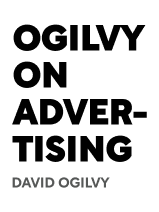

This article is an excerpt from the Shortform book guide to "Ogilvy On Advertising" by David Ogilvy. Shortform has the world's best summaries and analyses of books you should be reading.
Like this article? Sign up for a free trial here .
What do you need to know about writing headlines for print ads? How can you write the best headlines?
Writing headlines for ads is challenging. You need to convey purpose, discuss the product, and grab the reader’s attention. In Ogilvy on Advertising, David Ogilvy offers advice on how to write great headlines for ads.
Read more about writing headlines for advertisements and how to write great headlines.
Writing Headlines
The headline is the most important part of a print ad because 80% of people read only the headline, not the ad’s copy. Writing headlines that don’t name the product or what it will do are recalled 20% less often than the average recall. To make your headline effective:
Tip #1: *Offer a benefit. Headlines that include a benefit are read by 400% more people than the ones that don’t. When writing headlines, keep this in mind.
- (Shortform example: If you sell face cream, use a headline that promises good skin, such as “Make Your Skin Softer.”)
Tip #2: *Offer information. Ads with helpful information get 75% more readers than ads that only talk about products.
- For example, an ad for the cleaning product Rinso gave instructions for how to remove a variety of common stains using Rinso.
Tip #3: *Contain news about a product. Ads with news are recalled 22% more often than ads without it. The news can be that there’s a new product, or that an old product has a new use or has been updated. News is especially effective for business advertising because people want to find out about new products. According to a McGraw-Hill study, ads about new products get better responses than articles about new products in journals.
- For example, baking soda, an old product for baking, was advertised with news about it also working as a fridge deodorizer.
Tip #4: Include your brand name. Otherwise, the 80% of people who don’t read the copy won’t know what the ad is for. Great headlines can fix that.
Tip #5: Use buzzwords. There are certain words, such as “amazing” or “suddenly,” that will always grab the reader’s attention.
Tip #6: Target your audience. If your product is niche, name your audience to attract their attention.
- For example, if you sell asthma inhalers, put the word “asthma” in the headline.
Tip #7: Mention the name of the city if you’re advertising in a local paper. People are interested in things that are happening in their region.
Tip #8: Make the headline only as long as it needs to be. The research on headline length is conflicting—some sources found the short headlines sold more; others found that writing headlines with 10 words sold more. Therefore, use whatever length is appropriate for your ad.
- For example, a Volkswagen ad about quality control used the one-word headline “Lemon” to describe the cars that didn’t pass inspection. “Lemon” made its way into popular usage and is commonly used to describe a bad car.
Tip #9: Be specific. Specifics are more persuasive and memorable.
- For example, when advertising Sears’s low prices, Ogilvy wrote that Sears’s profit was less than 5%, rather than “lower than you’d think.”
Tip #10: Put the headline in quotes. This makes people remember the ad 28% more often.
Tip #11: Use words that generate emotions.
- For example, one psychologist found that people reacted to the word “darling,” so Ogilvy used it in an ad.
Tip #12: Don’t use puns or wordplay. This can confuse readers.
Writing headlines takes practice, but you can follow these steps to create great headlines.

———End of Preview———
Like what you just read? Read the rest of the world's best book summary and analysis of David Ogilvy's "Ogilvy On Advertising" at Shortform .
Here's what you'll find in our full Ogilvy On Advertising summary :
- What the "father of advertising" has learned from his decades' of experience
- How to craft easy-to-understand ads that work
- The 6 pioneers of the advertising industry






